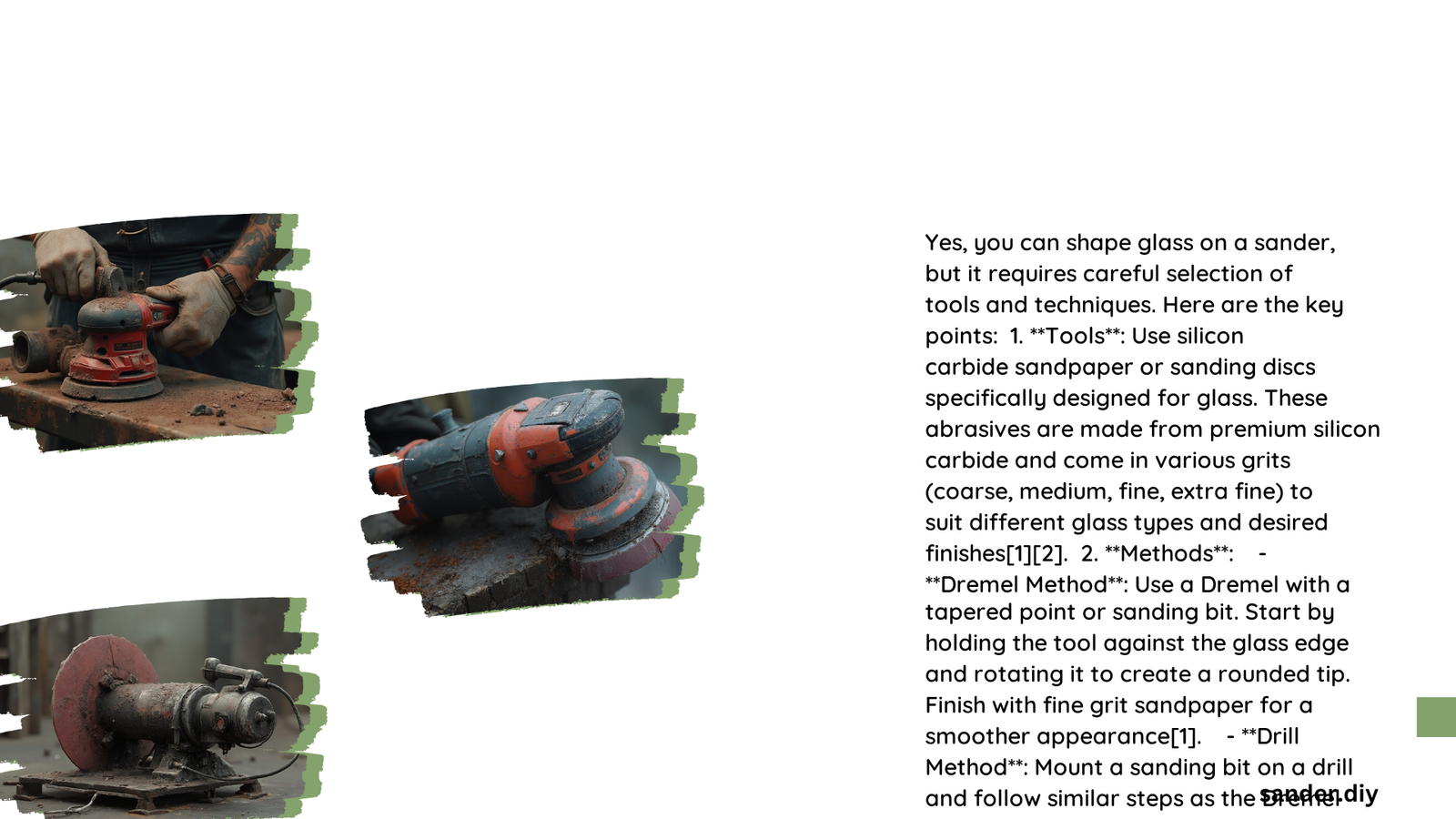Shaping glass on a sander is possible and can be an effective method for coldworking glass. This technique involves using various grits of sandpaper and different types of sanders to grind, shape, and polish glass without heat. While it requires careful handling and proper safety precautions, sanding glass can achieve smooth edges, precise shapes, and even high-gloss finishes. This article explores the techniques, tools, and safety measures needed for successfully shaping glass on a sander.
Can Glass Be Shaped Using a Sander?
Yes, glass can be shaped using a sander. This process, known as coldworking, allows you to grind, smooth, and polish glass without applying heat. Here’s how it works:
- Initial grinding with coarse grits removes excess glass and rough shapes the piece.
- Progressively finer grits smooth the surface and refine the shape.
- Polishing with ultra-fine grits and compounds achieves a high-gloss finish.
However, it’s crucial to use the right techniques, tools, and safety measures to prevent damage to the glass or injury to yourself.
What Types of Sanders Are Best for Glass Shaping?

When it comes to shaping glass, not all sanders are created equal. The best types for this task are:
Belt Sanders
- Ideal for initial shaping and removing large amounts of glass
- Look for variable speed models like the Kalamazoo 1SM or Grizzly G1015
- Motor specifications: 1000-3000 RPM range
Orbital Sanders
- Better suited for finer work and polishing
- Recommended models: Festool RO 150 or Bosch ROS20VSC
- Motor specifications: 4000-12,000 RPM range
What Grit Sizes Should I Use for Glass Sanding?
Proper grit progression is key to achieving a smooth, polished finish on glass. Here’s a recommended sequence:
- Coarse (60-80 grit): Initial grinding and shaping
- Medium (120-220 grit): Refining shape and smoothing surface
- Fine (400-600 grit): Polishing and removing minor scratches
- Extra Fine (800-1200+ grit): Final polishing for high-gloss finish
- Polishing compounds: Cerium oxide or aluminum oxide for mirror finish
How Do I Safely Sand Glass?
Safety should be your top priority when sanding glass. Follow these essential precautions:
Personal Protective Equipment (PPE)
- Safety glasses to protect eyes from glass particles
- Dust mask to prevent inhalation of glass dust
- Gloves to protect hands from cuts and abrasions
- Hearing protection to guard against sander noise
Dust Management
- Use a dust collection system or HEPA vacuum
- Work in a well-ventilated area
Proper Handling Techniques
- Secure glass firmly during sanding
- Monitor temperature to prevent overheating and cracking
- Clean tools regularly to prevent scratch-causing buildup
What Are the Steps to Shape Glass on a Sander?
Follow this step-by-step process to shape glass on a sander:
- Preparation
- Put on all necessary PPE
- Secure the glass piece firmly
-
Set up dust collection system
-
Initial Grinding
- Use 60-80 grit sandpaper on a belt sander
- Remove excess glass and rough out the shape
-
Work slowly and evenly across the surface
-
Shaping and Smoothing
- Progress to 120-220 grit
- Refine the shape and smooth out rough areas
-
Check progress frequently
-
Polishing
- Move to 400-600 grit
- Begin polishing process
-
Use an orbital sander for more control
-
Final Polishing
- Use 800-1200+ grit or polishing compounds
- Switch to felt wheels or polishing pads
-
Achieve desired level of gloss
-
Clean-up
- Thoroughly clean the glass piece
- Dispose of glass dust safely
- Clean and maintain your sanding equipment
What Adjustments Are Needed for Different Glass Types?
Different types of glass may require slight adjustments to your sanding technique:
| Glass Type | Adjustments Needed |
|---|---|
| Borosilicate | Harder than soda-lime; may require more time and effort |
| Colored Glass | More prone to scratches; handle with extra care |
| Tempered Glass | Cannot be sanded; will shatter if attempted |
| Laminated Glass | Sand each layer separately; avoid damaging interlayer |
What Are Common Mistakes to Avoid When Sanding Glass?
To ensure success and safety, avoid these common pitfalls:
- Skipping grit sizes in the progression
- Applying too much pressure, which can cause cracks
- Neglecting proper dust management
- Failing to secure the glass properly
- Not wearing appropriate PPE
- Overheating the glass during sanding
By following the proper techniques, using the right tools, and prioritizing safety, you can successfully shape glass on a sander. This method offers a cost-effective way to customize glass pieces for various projects, from art to home improvement. Remember to always work carefully and patiently for the best results.
